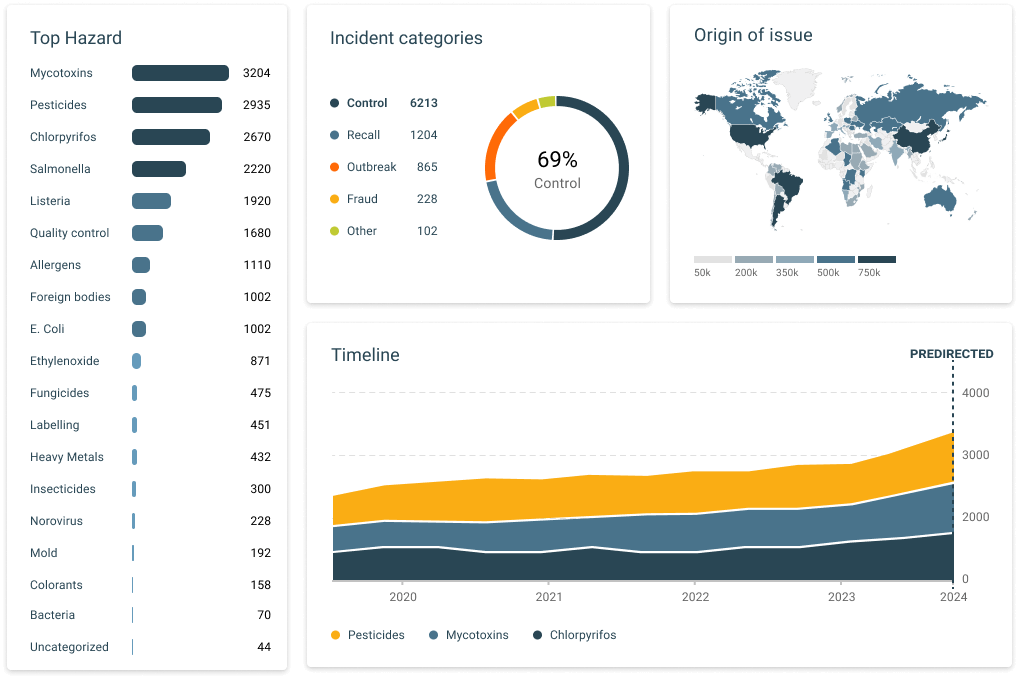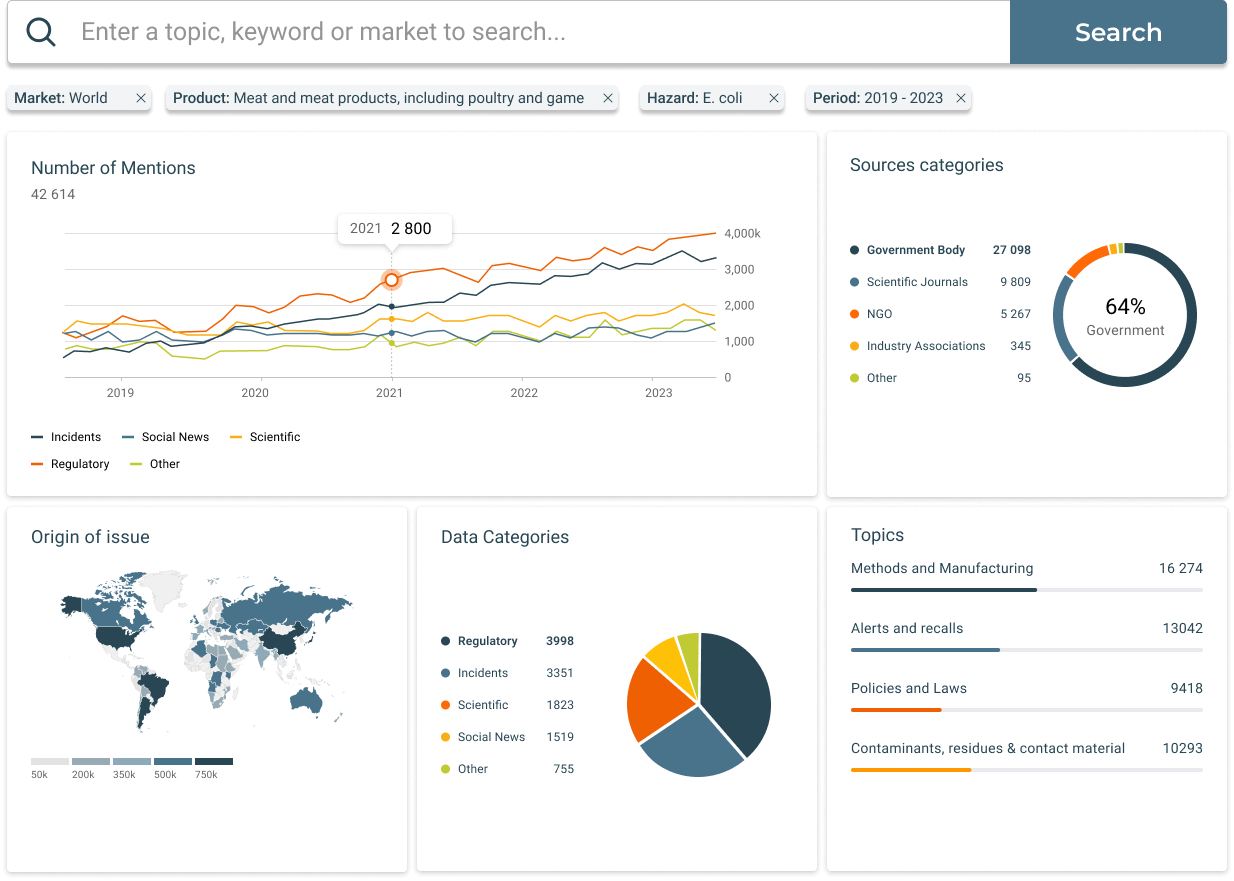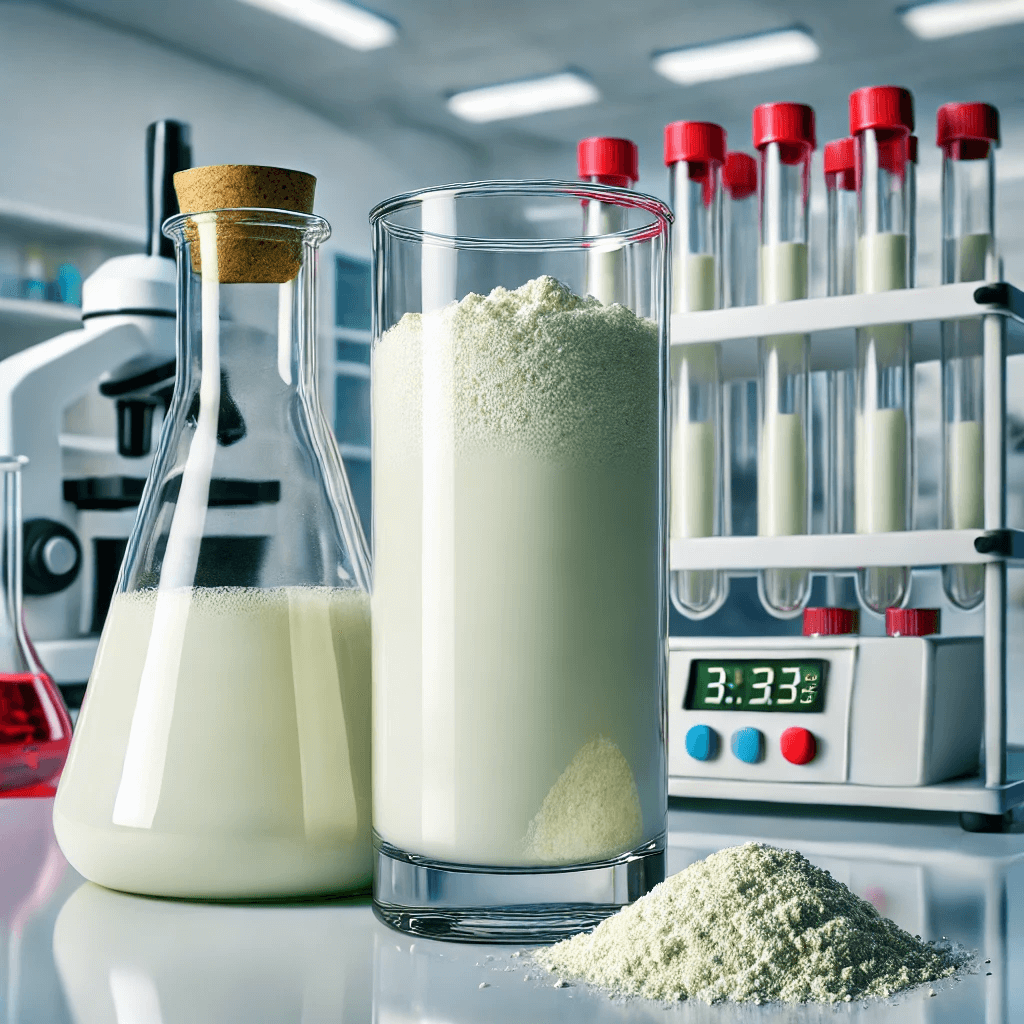Food fraud is an increasing problem in the world's food business arena and impacts both the consumer and the business. It refers to intentional substitution, addition, tampering, or misrepresentation of food, food ingredients, or food packaging for economic gain. The impacts from food fraud can be devastating, ranging from an economic cost to the company to serious health issues with consumers. Knowing the different types of food fraud and real-life examples helps in prevention from such incidents and ensures the safety and integrity of food.
Food fraud takes many forms, and each form presents special challenges and hazards. According to the latter, illegal actions, such as adulteration, substitution, counterfeiting, and mislabeling, erode consumer confidence and often compromise human safety. The current paper covers some of the most common types of food fraud and identifies striking real-world cases that bring out their effect best. We present these examples to raise awareness and provide insights into how to effectively fight food fraud.
Types of Food Fraud
Food fraud happens in different ways, each having its own techniques and implications. Following are the main types:
- ADULTERATION
Adulteration means addition of inferior or prohibited substances to a product to increase the quantity while decreasing the cost of production. Water, starch, and dangerous chemicals are common adulterants. This may not only dupe the consumers but can also be hazardous to health. - SUBSTITUTION
Substitution is a form of fraud whereby a low-cost ingredient is substituted for one of high value. This happens mostly with products like olive oil, whereby the expensive extra-virgin olive oil is replaced with low grade oils. - COUNTERFEITING
Counterfeiting refers to manufacturing and selling counterfeited goods. Counterfeiting has a huge impact on brand image and consumer confidence. The most famous examples are counterfeit wines and spirits. - MISLABELING
Mislabeling is where the incorrect origin, quality or contents information on a product is given to the consumer. This is a form of fraud committed against consumers and illegal as well. Examples are mislabeled seafood and false organic labeling. - THEFT AND DIVERSION
Theft and diversion occur when goods are either stolen or diverted from the normal flow of goods within the legal supply chains, after which they are sold illegally. This can also involve repackaging stolen products and selling to unsuspecting consumers. - UNAPPROVED ENHANCEMENTS
Unapproved enhancements add unauthorized additives or methods to enhance the appearance of products or extend shelf-life, such as illegal dyes used in spices or unauthorized hormones in meat products, which pose health risks to consumers.
As such, each type of food fraud has its specific peculiarities and potential risks; hence, vigilance and robust detection methods in this area have paramount consumer protection and market integrity implications.
Real-World Examples of Food Fraud
Adulteration Cases
-
Melamine in Milk (China) In 2008, China faced a major food scandal when melamine, a toxic chemical, was found in infant formula and other dairy products. This adulteration was intended to falsely boost protein content readings. As a result, over 300,000 infants were affected, with many suffering from kidney stones and other severe health issues. This incident led to a global outcry and significant changes in food safety regulations in China.
-
Horse Meat Scandal (Europe) In 2013, Europe was rocked by the discovery that horse meat was being sold as beef in various processed food products. This widespread adulteration affected numerous countries and brands, leading to recalls and a loss of consumer trust. The scandal highlighted the complexities of the global food supply chain and the need for better traceability and regulation.
Substitution Cases
-
Olive Oil Adulteration Olive oil is one of the most commonly adulterated food products. Instances have been reported where expensive extra-virgin olive oil is diluted with cheaper oils such as soybean or sunflower oil. This not only deceives consumers but can also lead to allergic reactions and other health issues. Regulatory bodies have increased scrutiny and testing to combat this type of fraud.
-
Fish Species Substitution Fish fraud involves the substitution of high-value fish species with cheaper alternatives. For example, red snapper is often replaced with tilapia or other lower-cost fish. This practice misleads consumers and can pose health risks, especially for those with specific dietary restrictions. Studies have shown that fish mislabeling can be as high as 30% in some markets.
Counterfeiting Cases
-
Counterfeit Wine and Spirits Counterfeit alcohol is a significant issue worldwide. High-end wines and spirits are often faked, with labels and packaging closely mimicking genuine products. In some cases, counterfeiters use harmful substances to produce the alcohol. A notable case involved the counterfeiting of rare wines, where collectors were defrauded of millions of dollars.
-
Fake Organic Labels The demand for organic products has led to an increase in counterfeit organic labels. Some conventional products are falsely labeled as organic to fetch higher prices. This undermines consumer trust and harms legitimate organic producers. Regulatory agencies have been working to tighten certification processes and enforcement to address this issue.
Mislabeling Cases
-
Incorrectly Labeled Seafood Mislabeling of seafood is a common practice where cheaper fish are labeled as more expensive varieties. For example, Atlantic cod may be sold as Pacific cod. This deception not only affects consumers financially but can also pose health risks due to differences in allergen profiles and mercury content.
-
Fake Kobe Beef Kobe beef, a highly prized and expensive Japanese beef, is often misrepresented in restaurants and stores. Some establishments claim to sell Kobe beef, but the actual product may be a different, lower-quality meat. Authentic Kobe beef is rare and closely regulated, making these fraudulent claims especially misleading.
Theft and Diversion Cases
-
Stolen Cheese Entering the Market In some instances, large quantities of cheese have been stolen and then sold on the black market. These stolen goods often bypass safety inspections and can be unsafe for consumption. For example, in Italy, organized crime groups have been involved in the theft and illegal distribution of Parmigiano-Reggiano cheese.
-
Diverted Baby Formula Baby formula is a high-value item often targeted for theft. Stolen formula can end up being repackaged and sold through unauthorized channels. This diversion not only defrauds legitimate businesses but also poses risks to infants, as the stolen formula may not be stored or handled properly.
Unapproved Enhancement Cases
-
Illegal Dyes in Spices Some spices, like turmeric and chili powder, have been found to contain illegal dyes to enhance their color. These dyes, such as lead chromate, can be toxic and pose serious health risks. Regulatory agencies have issued recalls and warnings to address these adulterated products.
-
Unauthorized Hormones in Meat Products The use of unauthorized hormones in livestock to promote growth is another form of food fraud. These hormones can remain in the meat and potentially cause health issues in consumers. Regulatory bodies have strict guidelines on hormone use, but some producers still engage in this illegal practice to increase their profits.
Impact of Food Fraud
Health Risks for Consumers
Food fraud has some serious health risks since, during most instances, adulterants and unapproved enhancements can easily lead to foodborne illnesses, allergic reactions, and even long-term health complications. For example, milk contaminated with melamine resulted in kidney damage in infants. Consumers may also be unwittingly exposed to dangerous compounds present in fake and mislabeled products.
Economic Losses for Legitimate Businesses
Food fraud is economically very injurious to legitimate businesses. They have to face unlimited competition from fraudsters who reduce costs by unethical practices. The horse meat scandal resulted in huge economic losses for brands of repute due to expensive recalls and brand reputation damage
Loss of Consumer Trust
The recurrent case of food fraud damages consumers' trust in the brand name and the industry as a whole. What may further be a concern to businesses is the fact that once lost, it takes lots of time and effort to regain the trust of the consumers. Transparency and tight quality controls are needed to regain consumer trust.
Regulatory and Legal Challenges
Food fraud also raises many regulatory and legal issues. Enforcement agencies are struggling with a constantly moving target of new techniques of fraud and must continually develop methods for their detection. Criminal prosecutions against fraudsters may be lengthy and resource-intensive, as has been witnessed in many high-profile prosecutions.
Prevention and Detection
Technologies and Methods for Detecting Food Fraud
With improvement in technologies, fraud detection has become more accurate and specific. DNA barcoding, isotope analysis, and spectrometry are some of the techniques used to detect mislabeling and adulteration. Blockchain technology is under research for more transparency and traceability in the supply chain.
Role of Regulations and Enforcement Agencies
Noticeably, agencies like FDA and EFSA are highly instrumental in the fight against food fraud. They set standards, inspect premises, and force compliance. Inter-agency coordination worldwide has been done to root out the problem of food fraud.
Industry Best Practices and Consumer Tips
Industry best practices include stringent supply chain management, regular audits, and third-party certifications. Consumers can protect themselves by purchasing from reputable sources, checking product labels, and being cautious of deals that seem too good to be true.
Food fraud is very, very holistic in nature. Understanding the types and real examples of food fraud will, therefore, help consumers and businesses recognize them better. Vigilance all along the supply chain, advanced detection technologies, and robust regulatory frameworks form the day's order in the war against food fraud. The players in this chain need to work together toward securing the safety and integrity of the food supply so that public health and economic interests are guaranteed.
How SGS Digicomply Helps in Food Fraud Detection and Prevention
SGS Digicomply’s suite of tools, powered by AI, significantly enhances the detection and prevention of food fraud.
Food Safety Intelligence Hub
The Food Safety Intelligence Hub integrates vast amounts of food safety data to provide comprehensive insights into potential fraud risks. By using AI, it identifies patterns and trends, enabling proactive measures against food fraud. For example, it can detect unusual spikes in specific contaminants, indicating potential adulteration. Watch demo.

Regulatory Intelligence Hub
This feature ensures compliance with global food regulations. By continuously monitoring regulatory changes, it helps businesses stay updated and identify gaps that fraudsters might exploit. It alerts users to new regulations and provides detailed analyses of compliance requirements, reducing the risk of fraudulent activities slipping through regulatory cracks. Watch demo.

Global Ingredient Monitor
The Global Ingredient Monitor tracks ingredients across the supply chain. AI analyzes data from various sources to verify ingredient authenticity and quality. This feature helps detect adulteration and substitution by comparing reported ingredient details against known standards and historical data, ensuring the integrity of the supply chain. Watch demo.

Horizon Scanning
Horizon Scanning leverages AI to predict emerging threats by analyzing global data sources, including news, scientific publications, and social media. It provides early warnings about potential food fraud incidents, allowing companies to take preventive actions. For instance, it can identify rising concerns about specific ingredients or suppliers, enabling preemptive measures. Watch demo.

It thus protects products and preserves consumer confidence in an increasingly complicated global food supply chain by providing businesses with real-time insights, updates in regulation, and predictive analytics.





.webp?width=1644&height=1254&name=Food%20Safety%20Dashboard%201%20(1).webp)
